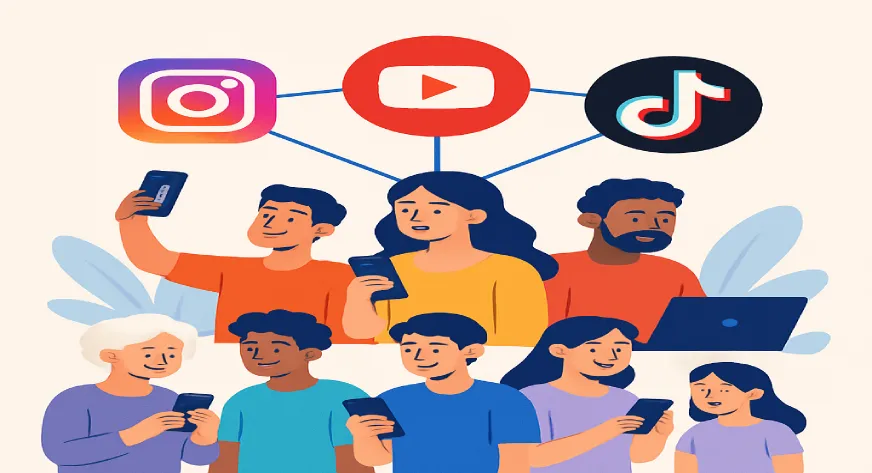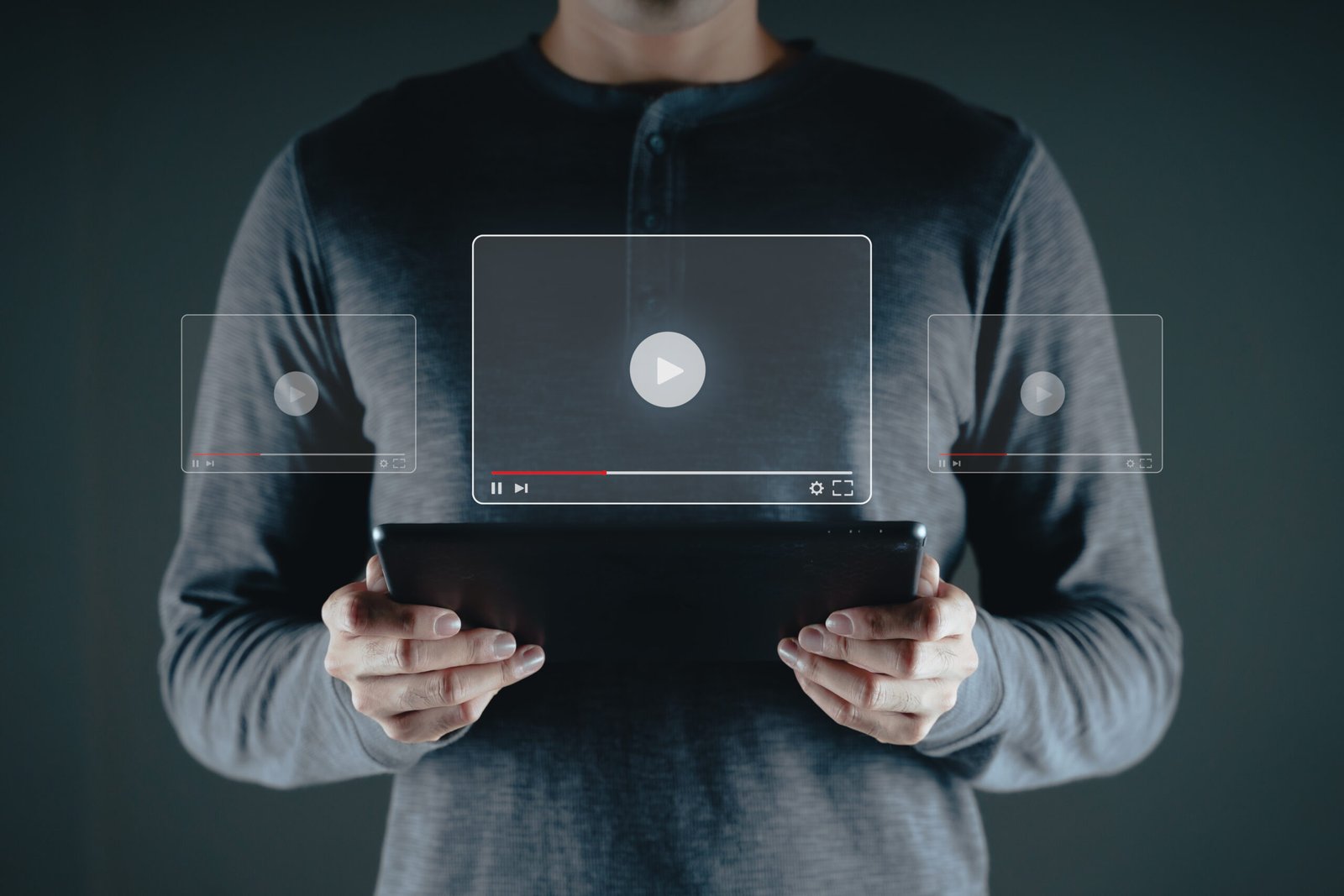In today’s digital landscape, a well-crafted influencer marketing strategy is essential for brands aiming to build authentic connections and drive measurable growth. As social media evolves, so do influencer marketing approaches, making it crucial to stay ahead with innovative influencer marketing strategies that resonate with your audience and align with your goals.

Whether you’re a B2C brand looking to boost engagement or exploring a B2B influencer marketing strategy, understanding the framework behind successful campaigns is key. This blog will guide you through creating a winning influencer marketing strategy, reveal the impact of influencer marketing, and provide insights into trends shaping the influencer marketing strategy 2025.
Why You Need a Strong Influencer Marketing Strategy
The impact of influencer marketing on consumer behavior and brand awareness is undeniable. According to recent studies, consumers trust recommendations from influencers nearly as much as personal recommendations. Influencers humanize brands, foster trust, and drive purchase decisions through relatable content.
However, without a clear influencer marketing strategy, efforts can be disjointed, leading to wasted budgets and missed opportunities. A solid strategy helps you:
- Identify the right influencers and platforms
- Set measurable goals aligned with business objectives
- Craft authentic and engaging content campaigns
- Track performance and optimize for better results

Step 1: Define Your Goals and Objectives
Before launching any campaign, clarify what you want to achieve. Common goals include:
- Increasing brand awareness and reach
- Driving website traffic or app downloads
- Generating sales or leads
- Building brand loyalty and community engagement
Setting SMART goals (Specific, Measurable, Achievable, Relevant, Time-bound) will help you evaluate the success of your influencer marketing efforts.
Step 2: Understand Your Target Audience
A deep understanding of your audience is fundamental to an effective influencer marketing strategy. Analyze demographics, interests, online behavior, and pain points.
For example, a B2B influencer marketing strategy focuses more on industry expertise and thought leadership, targeting decision-makers on platforms like LinkedIn or Twitter. Conversely, B2C brands may prioritize Instagram or TikTok for lifestyle content.
Step 3: Choose the Right Influencers
Selecting influencers who align with your brand values and audience is crucial. Consider the following influencer types:
- Mega Influencers: High reach but costly, good for broad awareness.
- Macro Influencers: Strong niche following and influence.
- Micro Influencers: Highly engaged smaller communities.
- Nano Influencers: Very niche, trusted voices within tight-knit groups.
For a B2B approach, thought leaders, industry experts, and professionals with credibility and engaged followers are ideal.
Step 4: Craft Authentic Content Collaborations
Successful influencer marketing strategies rely on authentic storytelling rather than hard selling. Collaborate with influencers to create content that naturally integrates your brand message while allowing creative freedom.
Use various formats like blog posts, videos, social media Stories, Reels, or podcasts depending on what resonates best with your audience.
Step 5: Leverage Multiple Channels
Don’t limit your influencer marketing efforts to a single platform. The influencer marketing strategy 2025 trend points to multi-channel campaigns combining Instagram, YouTube, TikTok, LinkedIn, and emerging platforms to maximize reach and engagement.
For B2B brands, LinkedIn and Twitter are critical. For B2C, visual and video platforms dominate.
Step 6: Monitor, Measure, and Optimize
Tracking key performance indicators (KPIs) such as engagement rates, reach, website traffic, conversions, and ROI is essential. Use analytics tools and influencer marketing platforms to get real-time data.
Regularly review results to understand what works and optimize campaigns accordingly, ensuring continuous improvement.
The Growing Impact of Influencer Marketing
The impact of influencer marketing extends beyond direct sales. It builds brand credibility, nurtures communities, and generates valuable user-generated content. Influencer partnerships also help brands tap into new markets and demographics they might not reach through traditional advertising.
Key Trends in Influencer Marketing Strategy 2025
Looking ahead, here are some trends shaping the influencer marketing strategy 2025 landscape:
- Rise of Micro and Nano Influencers: Smaller influencers with authentic audiences will gain more prominence.
- Data-Driven Campaigns: Leveraging AI and analytics to predict influencer performance and audience behavior.
- Long-Term Partnerships: Brands will prioritize sustained relationships over one-off campaigns.
- Focus on Diversity and Inclusion: Embracing diverse voices to connect authentically with broader audiences.
- Integration with E-Commerce: Shoppable content and social commerce will become standard.
B2B Influencer Marketing Strategy: Unique Considerations
Implementing a B2B influencer marketing strategy requires a nuanced approach. Here are some tips:
- Prioritize influencers who are industry experts or thought leaders.
- Focus on educational content such as webinars, whitepapers, and case studies.
- Build trust through transparency and professionalism.
- Utilize LinkedIn and Twitter more heavily than consumer-focused platforms.
- Measure success by lead quality and conversion rates, not just reach.
Conclusion
Creating a winning influencer marketing strategy involves careful planning, understanding your audience, selecting the right influencers, and crafting authentic, multi-channel campaigns. The impact of influencer marketing is profound, offering brands a unique way to build trust and drive growth.
As the digital landscape evolves, staying updated on the influencer marketing strategy 2025 trends ensures your campaigns remain relevant and effective. Whether you’re focusing on B2B or B2C, integrating these strategies will set you up for influencer marketing success.
Frequently Asked Questions
1. Why is having a clear influencer marketing strategy important?
Without a strategy, campaigns can lack direction, leading to poor influencer fit, unmeasurable results, and wasted budget. A strategy ensures goal alignment and better outcomes.
2. What platforms should B2B brands prioritize for influencer marketing?
B2B brands often see better results on LinkedIn and Twitter, where industry thought leaders and professionals actively engage in conversations and share insights.
3. How do I set measurable goals for an influencer campaign?
Use the SMART framework—goals should be Specific, Measurable, Achievable, Relevant, and Time-bound. Examples include boosting site traffic by 20% or increasing sales by 10% in a month.
4. How can I keep influencer content authentic while promoting my brand?
Collaborate with influencers to co-create content. Trust their creative voice and allow them to present your product in a way that aligns with their usual style and audience expectations.








